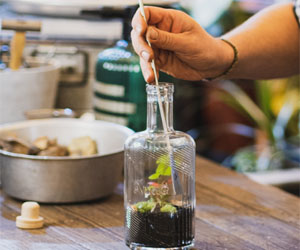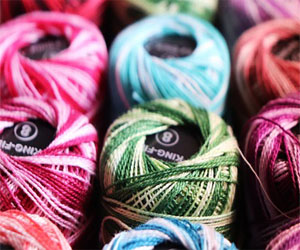


A Sustainable Lifestyle For A Better Future

Green living, often referred to as sustainable living, is a way of life that prioritizes environmental responsibility, resource conservation, and a reduced carbon footprint. In a world facing increasing environmental challenges, adopting a green lifestyle has never been more crucial. This article explores the principles and benefits of green living, as well as practical tips for incorporating it into your daily routine.
Key Principles Of Green Living
Reduce, Reuse, Recycle: This timeless mantra forms the foundation of green living. Reducing consumption, reusing items when possible, and recycling materials are essential steps in minimizing waste.
Energy Efficiency: Green living encourages energy-conscious choices such as using energy-efficient appliances, properly insulating homes, and turning off lights and electronics when not in use.
Sustainable Transportation: Opting for eco-friendly modes of transportation, such as biking, walking, carpooling, or using public transit, reduces carbon emissions associated with personal vehicles.
Sustainable Food Choices: Adopting a diet rich in locally sourced, organic, and plant-based foods can reduce the carbon footprint associated with food production and distribution.
Water Conservation: Conserving water through practices like fixing leaks, using low-flow fixtures, and reducing water waste is a fundamental aspect of green living.
Minimalism: Embracing minimalism involves living with fewer possessions, which not only reduces consumption but also fosters a simpler, more sustainable lifestyle.
Benefits Of Green Living
Reduced Environmental Impact: Green living minimizes resource consumption, lowers carbon emissions, and reduces waste, thus mitigating harm to the environment.
Cost Savings: Energy-efficient practices, reduced consumption, and sustainable choices often lead to financial savings over time.
Healthier Lifestyle: Sustainable food choices, reduced exposure to harmful chemicals, and increased physical activity associated with green living can lead to better physical and mental health.
Community And Social Benefits: Green living can foster a sense of community, as people often engage in local, eco-friendly initiatives and share common goals.
Practical Tips For Green Living
Reduce, Reuse, Recycle: Make a conscious effort to reduce your waste, find new uses for old items, and recycle materials according to local guidelines.
Energy Efficiency: Upgrade to energy-efficient appliances, use programmable thermostats, and adopt energy-saving habits like turning off lights and unplugging chargers.
Eco-Friendly Transportation: Whenever possible, walk, bike, carpool, or use public transportation. Consider investing in an electric or hybrid vehicle.
Sustainable Diet: Choose locally sourced, organic, and plant-based foods. Reduce food waste and support sustainable farming practices.
Water Conservation: Fix leaks, install low-flow fixtures, and be mindful of water usage in daily activities.
Waste Reduction: Embrace a minimalist approach to possessions and make conscious choices to buy products with minimal packaging.
Support Sustainable Initiatives: Get involved in local environmental groups and support sustainable projects in your community.
Green living is a holistic approach to reducing our impact on the environment while enhancing our quality of life. By embracing the principles of green living and incorporating practical tips into your daily routine, you can play a vital role in building a more sustainable and eco-friendly future for yourself and generations to come. Whether it's through small changes in your daily habits or larger lifestyle shifts, every effort counts in the journey toward green living.
Exploring Candle Crafting Techniques
 Embedding: Embedding involves placing decorative objects (like dried flowers, seashells, or small figurines) within the candle as it cools and hardens. The objects are preserved within the candle, providing a unique, artistic touch.
Embedding: Embedding involves placing decorative objects (like dried flowers, seashells, or small figurines) within the candle as it cools and hardens. The objects are preserved within the candle, providing a unique, artistic touch.
Marbling And Swirling:
Marbled Candles: Achieve marbling effects by mixing various colored wax and gently swirling them together before pouring into a mold. The result is a candle with beautiful, intertwined patterns.
Swirled Candles: Create captivating swirl patterns by pouring different colored wax into a mold, then using a tool to create swirling designs before the wax solidifies.
Carving And Sculpting:
Carved Candles: Hand-carved candles are true works of art. After the candle has cooled and solidified, use carving tools to create intricate designs and patterns on the candle's surface.
Sculpted Candles: Sculpted candles involve shaping the wax while it's still soft and malleable. This technique allows for the creation of 3D designs and intricate shapes.
Aromatherapy And Scented Candles:
Aromatherapy Candles: Combine the art of candle making with the therapeutic benefits of aromatherapy. Infuse your candles with essential oils, such as lavender or eucalyptus, to create scented candles that promote relaxation and well-being.
Wax Embeds And Inclusions:
Wax Embeds: Add additional wax elements within your candles to create textural interest. These can be in the form of small wax chunks, flakes, or even finely grated wax that creates unique patterns within the candle.
Inclusions: Inclusions refer to adding non-wax elements like herbs, spices, or glitter to your candles. These inclusions can add a visual or aromatic dimension to your candles, making them truly one-of-a-kind.
Double Pour And Gel Candles:
Double Pour: This technique involves pouring a second layer of wax with a different color over an initial layer, creating a visually striking two-toned effect.
Gel Candles: Gel candles are made by using a clear, gel-like wax that allows for embedding decorative elements. The transparency of the gel enhances the visual appeal, making them perfect for decorative and gift candles.
Nurturing Your Inner Glow
 Nourishing From Within
Nourishing From Within
The skin is often considered a mirror of one's overall health, and health-conscious beauty acknowledges this fact. Consuming a balanced diet rich in vitamins, minerals, and antioxidants provides the essential building blocks for healthy skin and hair. Nutrient-dense foods, such as leafy greens, colorful fruits, and omega-3-rich fish, can contribute to a radiant complexion and lustrous locks.
Hydration is another cornerstone of health-conscious beauty. Proper hydration not only keeps the skin plump and glowing but also supports the body's natural detoxification processes. Drinking an adequate amount of water, along with herbal teas and hydrating foods, can help maintain skin's elasticity and clarity.
Clean And Mindful Skincare
While external beauty products aren't shunned in health-conscious beauty, the focus is on clean and mindful skincare choices. Avoiding products containing harmful chemicals and opting for natural or organic alternatives is essential. These choices help protect not only the skin but also the environment.
The Art Of Creative Upcycling
 Inspiration And Community
Inspiration And Community
Trash to treasure often inspires others to embrace their creativity and sustainability. There are numerous online communities, social media groups, and DIY websites dedicated to upcycling. These platforms provide opportunities to share your projects, gain insights, and connect with like-minded individuals who share a passion for creative reuse.
Getting Started With Upcycling
Start Small: If you're new to upcycling, begin with small, manageable projects. Repurposing an old picture frame or transforming a piece of clothing can be a great starting point.
Gather Supplies: Depending on your chosen project, collect the necessary supplies, which may include tools, paint, glue, or other materials.
Seek Inspiration: Look for inspiration in books, magazines, online platforms, and by observing the work of other upcyclers.
Learn Techniques: Familiarize yourself with upcycling techniques and methods. Learning how to properly clean, repair, or transform items is essential for successful projects.
Take Safety Precautions: Depending on your project, be aware of safety precautions. When working with tools, chemicals, or heavy materials, safety should be a top priority.
The art of turning trash into treasure is not only a sustainable and environmentally responsible practice but also a creative and economical endeavor. Whether you're a seasoned upcycler or new to the world of creative reuse, there are always opportunities to transform discarded items into valuable and beautiful treasures. As you embark on your upcycling journey, you'll discover the joy of creating something unique, contributing to a greener planet, and embracing a more resourceful and imaginative way of life.
Crafting Beauty With Thread
 Exploring The Rich World Of Decorative Stitching: Decorative stitching encompasses a wide array of techniques, each offering a unique way to embellish and beautify fabrics. While the art of sewing often serves a functional purpose, decorative stitching goes beyond utility to infuse items with a touch of artistic flair.
Exploring The Rich World Of Decorative Stitching: Decorative stitching encompasses a wide array of techniques, each offering a unique way to embellish and beautify fabrics. While the art of sewing often serves a functional purpose, decorative stitching goes beyond utility to infuse items with a touch of artistic flair.
Embroidery: The Timeless Embellishment
Embroidery is one of the most celebrated forms of decorative stitching. This intricate craft involves the use of various stitches, threads, and colors to create patterns, designs, and images on fabric. Whether it's delicate floral motifs, intricate lacework, or intricate monograms, embroidery adds a personal and artistic touch to everything from clothing to home furnishings.
Quilting: Stitching Stories In Fabric
Quilting is another form of decorative stitching that marries functionality with artistic expression. Quilters use stitches to join layers of fabric and create intricate designs that often narrate stories or reflect cultural traditions. From patchwork quilts to intricately stitched bedspreads, quilting is a testament to both creativity and craftsmanship.
Appliqué: Layering For Impact
Appliqué is a technique that involves sewing one piece of fabric onto another, often in a layered or patchwork manner. It allows for the addition of different textures, colors, and patterns to create striking and vibrant designs. Appliqué is commonly used in clothing, accessories, and textile art.
Exploring Herb Uses In Cooking
 Rosemary And Lamb: Rosemary's robust flavor pairs harmoniously with the rich and tender nature of lamb.
Rosemary And Lamb: Rosemary's robust flavor pairs harmoniously with the rich and tender nature of lamb.
Mint And Desserts: Mint's refreshing taste is perfect for desserts like chocolate mousse or fruit salads.
Parsley And Seafood: The bright, grassy flavor of parsley beautifully complements seafood dishes, such as shrimp scampi.
Versatile Uses
Herbs are incredibly versatile and can be used in various culinary applications:
Marinades: Herbs can be included in marinades to infuse meat, poultry, or vegetables with flavor. For example, a marinade of garlic, rosemary, and lemon juice can transform chicken into a delectable dish.
Sauces And Dressings: Herbs can be used to create vibrant sauces, such as pesto or chimichurri, or to elevate salad dressings, like a balsamic vinaigrette with fresh basil.
Flavoring Meats: Herbs can be used as a rub or stuffing for meats, adding depth and aroma. Sage and thyme with turkey, for instance, create a classic Thanksgiving flavor.
Infusions And Garnishes: Herbs can be used to infuse oils, butters, or even cocktails. A sprig of fresh mint in a mojito or a basil leaf in a gin and tonic can enhance the beverage's flavor and aroma.
Health Benefits
In addition to their flavor-enhancing qualities, herbs often have health benefits. For example, ginger is known for its digestive properties, while turmeric has anti-inflammatory qualities.